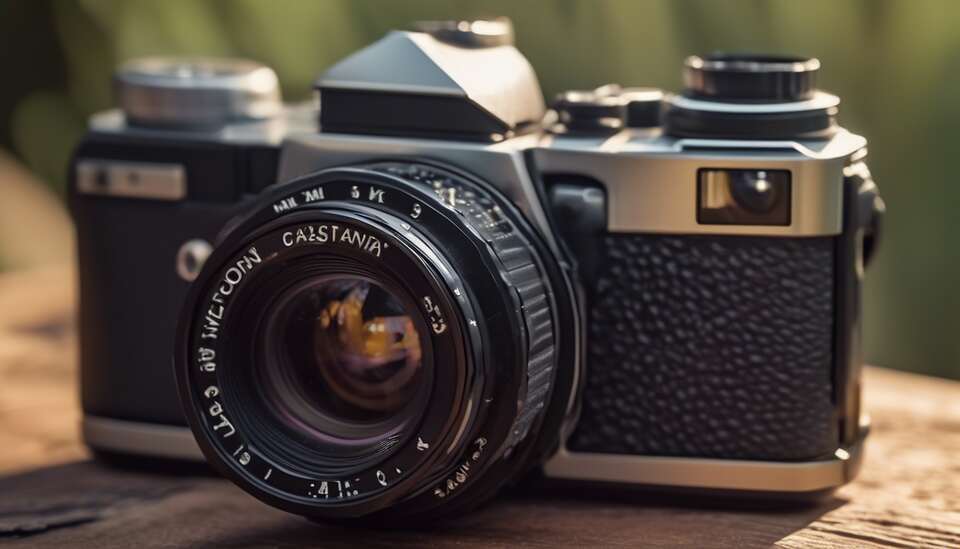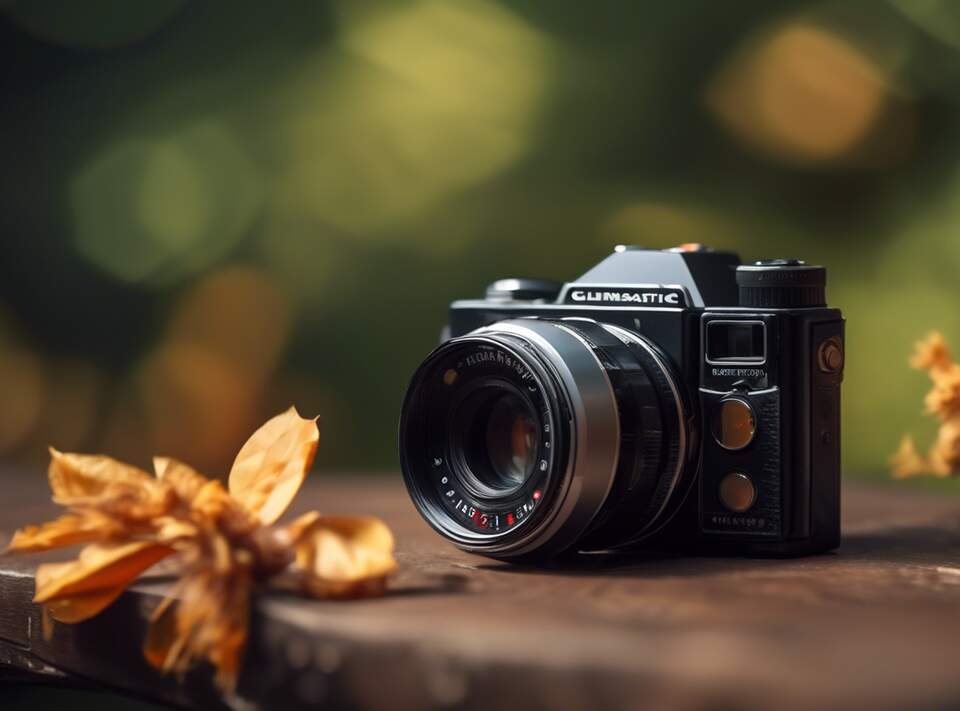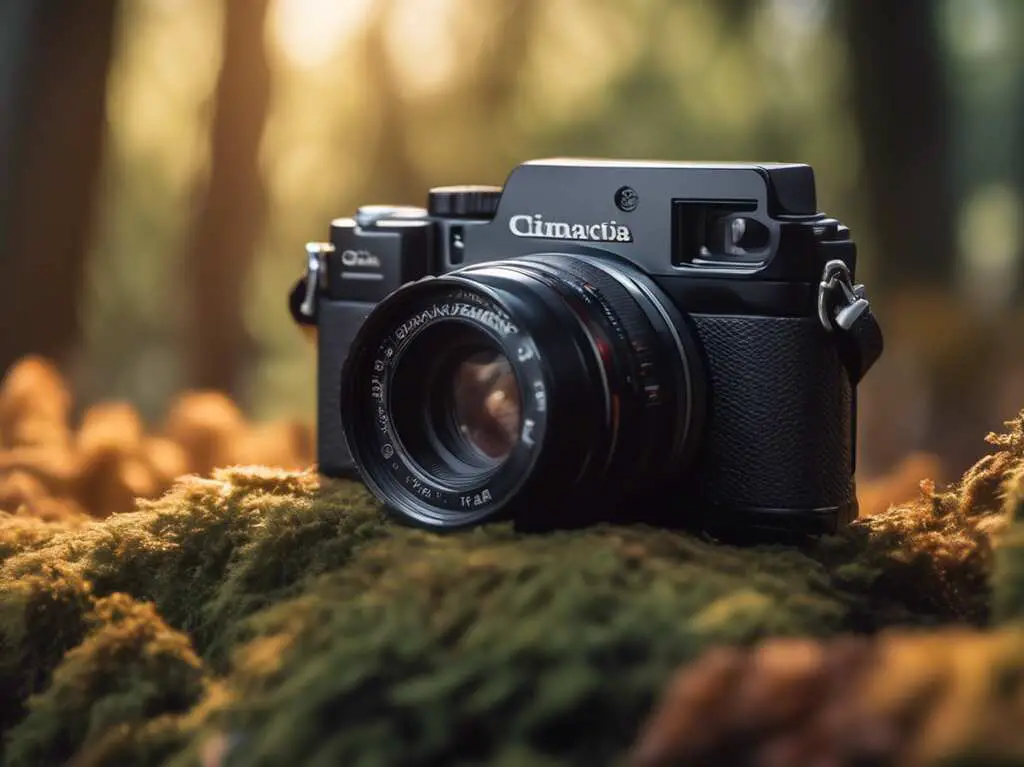
When it comes to birding, having the right point and shoot camera can make a significant difference in capturing those perfect moments in nature. With so many options available in the market, it can be overwhelming to choose the best one for your birding adventures. To help you make an informed decision, here are some top features to consider when selecting the best point and shoot camera for birding.
Table of Contents
Best Point-and-Shoot Cameras For Birding
Canon PowerShot SX740 HS Review:
The Canon PowerShot SX740 HS is a versatile and powerful point-and-shoot digital camera designed for both casual and enthusiast photographers. Featuring a sleek silver design, this compact camera boasts a 40x optical zoom, a 20.3 megapixel CMOS sensor, and 4K video recording capabilities. It’s the perfect blend of portability and performance, making it an ideal choice for capturing everything from distant bird subjects to everyday moments.
Pros:
- Powerful 40x Optical Zoom for Exceptional Reach
- High-Resolution 20.3 Megapixel CMOS Sensor
- 4K Video and 4K Time-lapse Movie Capabilities
- Built-in Wi-Fi and Bluetooth for Easy Sharing
- High-Speed Continuous Shooting up to 7.4 fps (10.0 fps with AF Lock)
- 3.0-inch Tilt-Type (180° up) LCD for Flexible Shooting Angles
Cons:
- No Optical Viewfinder Available
- Smaller Sensor May Limit Low-Light Performance
- Battery Life Could Be Improved for Extended Use
- Limited Manual Controls Compared to Advanced Models
- Maximum Aperture of 6.9 f Could Be Brighter for Better Low-Light Shots
Performance Measurements:
- Zoom Range: ⭐⭐⭐⭐
- Image Quality: ⭐⭐⭐⭐
- Video Quality: ⭐⭐⭐⭐⭐
- Autofocus Speed: ⭐⭐⭐⭐
- Low-Light Performance: ⭐⭐⭐
- Battery Life: ⭐⭐⭐
Verdict:
The Canon PowerShot SX740 HS is a compact yet powerful camera that offers impressive features for its size and price. With a robust 40x optical zoom, high-resolution 20.3 MP sensor, and 4K video capabilities, it is an excellent choice for photographers looking for a portable solution without sacrificing performance. While it lacks an optical viewfinder and some advanced manual controls, its overall versatility and ease of use make it a great value for bird photography and general use.
Elevate your photography game with the Canon PowerShot SX740 HS. Order now on Amazon and capture life’s moments with precision and clarity!
Nikon Coolpix A1000 Review:
The Nikon Coolpix A1000 is a compact digital camera designed to deliver exceptional performance and versatility. With a 16MP backside-illuminated CMOS sensor and a 35x optical zoom lens, this camera offers impressive image quality and zoom capabilities. The bundle includes a 16GB SDHC memory card and an all-weather sport camera case, making it a complete package for photographers on the go.
Pros:
- 35x Optical Zoom for Exceptional Reach
- 16MP Backside-Illuminated CMOS Sensor for High-Quality Images
- 4K Ultra HD Video Recording with Stereo Sound
- Compact and Lightweight Design for Portability
- Includes 16GB SDHC Memory Card and All-Weather Sport Camera Case
Cons:
- Limited Maximum Aperture of f/3.4-6.9
- No Built-In Viewfinder
- Smaller Sensor Size Compared to Larger DSLRs
- Battery Life Could Be Improved for Extended Shooting
- Some Users May Find the Menu System Complex
Performance Measurements:
- Zoom Range: ⭐⭐⭐⭐⭐
- Image Quality: ⭐⭐⭐⭐
- Video Quality: ⭐⭐⭐⭐
- Autofocus Speed: ⭐⭐⭐⭐
- Low-Light Performance: ⭐⭐⭐
- Battery Life: ⭐⭐⭐
Verdict:
The Nikon Coolpix A1000 is a versatile and powerful compact camera that excels in both photography and videography. With its impressive 35x optical zoom, high-quality 16MP sensor, and 4K video capabilities, it is an excellent choice for photographers seeking a portable and reliable camera. While it has some limitations in aperture and battery life, its overall performance and comprehensive bundle offer great value.
Elevate your photography game with the Nikon Coolpix A1000. Order now on Amazon and capture stunning images and videos with ease!
Canon PowerShot G7 X Mark III Review:
The Canon PowerShot G7 X Mark III Digital Camera bundle is a comprehensive package designed for photography enthusiasts looking for versatility and performance. This 20-piece kit includes the G7 X Mark III camera, a 64GB memory card, a 12″ flex tripod, a high-speed card reader, and other essential accessories. With a 20.2MP 1-inch stacked CMOS sensor, DIGIC 8 image processor, and 4.2x optical zoom lens, this camera offers excellent image quality and advanced features in a compact design.
Pros:
- High-Resolution 20.2MP 1-inch Stacked CMOS Sensor
- DIGIC 8 Image Processor for Enhanced Performance
- 4.2x Optical Zoom Lens with f/1.8-2.8 Aperture for Versatile Shooting
- UHD 4K30p and Full HD 120p Video Recording
- Live Streaming and Vertical Video Support
- Comprehensive Bundle with Essential Accessories
- Built-in Bluetooth and Wi-Fi for Easy Sharing
Cons:
- Optical Zoom Range Limited to 4.2x
- Battery Life Could Be Improved for Extended Shooting
- Smaller Sensor Size Compared to Larger DSLRs
- Limited Manual Controls for Advanced Users
- No Built-In Viewfinder
Performance Measurements:
- Image Quality: ⭐⭐⭐⭐⭐
- Video Quality: ⭐⭐⭐⭐⭐
- Autofocus Speed: ⭐⭐⭐⭐
- Zoom Range: ⭐⭐⭐
- Low-Light Performance: ⭐⭐⭐⭐
- Battery Life: ⭐⭐⭐
Verdict:
The Canon PowerShot G7 X Mark III Bundle offers an excellent combination of quality and convenience for photographers seeking a versatile, all-in-one package. With its high-resolution sensor, fast image processor, and impressive video capabilities, this camera excels in a variety of shooting scenarios. While it has some limitations in zoom range and battery life, its overall performance and comprehensive accessory kit make it a fantastic choice for those looking to elevate their photography and videography.
Upgrade your photography gear with the Canon PowerShot G7 X Mark III Bundle. Order now on Amazon and capture stunning images and videos with ease!
Panasonic LUMIX ZS100 Review:
The Panasonic LUMIX ZS100 is a versatile and powerful point-and-shoot camera designed for both casual and enthusiast photographers. Equipped with a large 1-inch 20.1 megapixel sensor and a 10x LEICA DC VARIO-ELMARIT lens, this camera delivers stunning image quality and impressive zoom performance. Its 4K Ultra HD video recording capabilities and innovative features like 4K PHOTO and Post Focus make it a standout in its class.
Pros:
- Large 1-inch, 20.1 Megapixel Sensor for High-Quality Photos
- 10x Optical Zoom with LEICA DC Lens for Versatile Shooting
- 4K Ultra HD Video Recording for Stunning Visuals
- Eye-Level Electronic Viewfinder (EVF) and Touch-Enabled LCD
- Lens-Mounted Control Ring for DSLR-Like Exposure Control
- Compact and Portable Design
Cons:
- Limited Maximum Aperture of f/2.8-5.9
- No Built-In Flash
- Battery Life Could Be Improved for Extended Use
- Smaller Sensor Size Compared to Larger DSLRs
- Some Users May Find the Menu System Complex
Performance Measurements:
- Image Quality: ⭐⭐⭐⭐⭐
- Zoom Range: ⭐⭐⭐⭐
- Video Quality: ⭐⭐⭐⭐⭐
- Autofocus Speed: ⭐⭐⭐⭐
- Low-Light Performance: ⭐⭐⭐⭐
- Battery Life: ⭐⭐⭐
Verdict:
The Panasonic LUMIX ZS100 is a compact powerhouse that excels in both photography and videography. Its large sensor, impressive 10x zoom, and 4K video capabilities make it a versatile choice for capturing high-quality images and videos. While it has some limitations in maximum aperture and battery life, its overall performance and innovative features offer great value for photographers seeking a portable yet powerful camera.
Capture your world in stunning detail with the Panasonic LUMIX ZS100. Order now on Amazon and elevate your photography and videography skills!
Sony RX100 VII Review:
The Sony RX100 VII is a top-tier compact camera designed for enthusiasts and professionals seeking high performance in a portable package. Featuring a 20.1MP 1.0-type stacked CMOS sensor and a Zeiss Vario-Sonnar T* 24-200mm F2.8-4.5 lens, this camera excels in both still photography and video recording. This bundle includes the Sony NP-BX1/M8 Lithium-Ion X Type Battery and the Sony AGR2 Attachment Grip, providing everything you need for a versatile shooting experience.
Pros:
- High-Resolution 20.1MP 1.0-type Stacked CMOS Sensor
- Zeiss Vario-Sonnar T* 24-200mm Lens with Large Aperture
- Fast 0.02 sec AF Speed with 357-Point Phase Detection and 425-Point Contrast Detection
- 20 fps Blackout-Free Shooting with Real-Time Eye AF and Tracking
- 4K Video Recording with S-Log3 and Interval Shooting
- Compact and Lightweight Design for Portability
- Includes Extra Battery and Attachment Grip for Enhanced Handling
Cons:
- Premium Price Point
- Limited Zoom Range Compared to Larger Cameras
- Small Size May Be Challenging for Users with Larger Hands
- Battery Life Could Be Improved for Extended Shooting Sessions
- Menu System Can Be Complex for Beginners
Performance Measurements:
- Image Quality: ⭐⭐⭐⭐⭐
- Zoom Range: ⭐⭐⭐⭐
- Video Quality: ⭐⭐⭐⭐⭐
- Autofocus Speed: ⭐⭐⭐⭐⭐
- Low-Light Performance: ⭐⭐⭐⭐
- Battery Life: ⭐⭐⭐⭐
Verdict:
The Sony RX100 VII is a premium compact camera that delivers outstanding performance in both photography and videography. With its advanced autofocus system, high-quality sensor, and versatile lens, it is an excellent choice for those who demand top-tier performance in a portable form factor. While the price is on the higher side, the included accessories and the camera’s capabilities make it a worthwhile investment for serious photographers and videographers.
Experience the pinnacle of compact camera performance with the Sony RX100 VII. Order now on Amazon and elevate your photography and videography to new heights!

Top Features to Consider When Choosing the Best Point and Shoot Camera for Birding
Optical Zoom Capability
One of the most crucial features to look for in a point and shoot camera for birding is its optical zoom capability. Birds can often be at a distance, making it essential to have a camera that can zoom in without losing image quality. Look for cameras with optical zoom ranges of at least 30x or more for better close-up shots of birds in the wild.
Fast Autofocus System
Birds are quick and constantly on the move, making it challenging to capture sharp images without a fast autofocus system. When choosing a point and shoot camera for birding, opt for one with a speedy autofocus system that can track and focus on birds rapidly. This feature ensures that you can capture clear and crisp shots of birds in action.
High-Resolution Sensor
For detailed and vibrant bird photos, a high-resolution sensor is essential in a point and shoot camera. A sensor with at least 16 megapixels or higher can provide sharp images with ample detail, allowing you to zoom in on photos without losing quality. A higher resolution sensor is particularly beneficial when cropping images to focus on specific bird details.
Image Stabilization Technology
Birding often involves capturing photos in outdoor environments where shaky hands can result in blurry images. To counteract this, look for a point and shoot camera with image stabilization technology. This feature helps reduce camera shake and ensures that your bird photos are sharp and clear, even when shooting in low light conditions or at high zoom levels.
Weather Sealing
Since birding takes you outdoors in various weather conditions, having a camera with weather sealing can protect it from dust, moisture, and other elements. Weather-sealed cameras are more durable and can withstand harsh environments, allowing you to focus on capturing stunning bird photos without worrying about the camera being damaged.
Burst Mode
Birds can be unpredictable in their movements, making it essential to have a camera with a burst mode feature. Burst mode allows you to capture multiple shots in quick succession, increasing your chances of getting the perfect shot of a bird in flight or engaging in other fast-paced behaviors. Look for a camera with a high continuous shooting speed for optimal bird photography.
Compact and Lightweight Design
Consider the portability of the camera for birding expeditions. A compact and lightweight design is ideal for birding trips as it allows you to carry the camera easily without adding bulk to your gear. Opt for a point and shoot camera that is easy to handle and transport, ensuring that you can capture bird photos comfortably during your outdoor adventures.
When selecting the best point and shoot camera for birding, prioritize features such as optical zoom capability, fast autofocus system, high-resolution sensor, image stabilization technology, weather sealing, burst mode, and compact design. By considering these essential features, you can find a camera that meets your birding needs and helps you capture stunning images of birds in their natural habitat.

Tips for Capturing Stunning Birding Photos with a Point and Shoot Camera
Bird watching and photography go hand in hand for many nature enthusiasts. Capturing stunning birding photos with a point and shoot camera can be a rewarding experience. These compact cameras are convenient to carry around and can still produce high-quality images of our feathered friends. To make the most of your birding photography adventures with a point and shoot camera, consider the following tips and techniques.
Understanding Your Camera Settings for Birding Photography
Before heading out to capture bird photos, take the time to familiarize yourself with your point and shoot camera settings. Understanding settings such as aperture, shutter speed, ISO, and focus modes can make a significant difference in the quality of your birding shots. For capturing birds in flight, a faster shutter speed is crucial to freeze their motion. Additionally, using a wide aperture can help blur the background, making the bird the focal point of your image.
Patience is Key in Birding Photography
Bird photography requires patience and perseverance. Birds are constantly moving, making it challenging to capture that perfect shot. Spend time observing bird behavior and familiarizing yourself with their movements. By being patient and waiting for the right moment, you increase your chances of capturing unique and captivating bird photos.
Use Natural Light to Your Advantage
Lighting plays a crucial role in photography. When birding, aim to shoot during the golden hours of early morning or late afternoon when the light is soft and warm. Harsh midday sunlight can create unwanted shadows and washed-out colors in your photos. Position yourself so that the light is falling on the bird, illuminating its features effectively.
Get Closer to the Birds
One of the biggest challenges in bird photography is getting close enough to your feathered subjects without disturbing them. Consider investing in a camera with a good optical zoom or using additional lenses to get closer to the birds without encroaching on their space. Remember to respect the bird’s habitat and observe from a distance to avoid causing distress.
Experiment with Composition and Angles
Make your bird photos visually interesting by experimenting with different compositions and angles. Instead of always placing the bird in the center of the frame, try off-center compositions following the rule of thirds. Capture birds in their natural habitat, showcasing their behavior and interactions with the environment. Don’t be afraid to explore unique angles and perspectives to add depth and creativity to your birding photos.
Practice Regularly and Review Your Shots
As with any form of photography, practice makes perfect. Take every opportunity to practice your birding photography skills and review your shots regularly. Pay attention to what works well in your photos and areas where you can improve. Learning from both successful and unsuccessful shots will help you grow as a birding photographer.
Capturing stunning birding photos with a point and shoot camera requires a combination of technical knowledge, patience, creativity, and practice. By following these tips and techniques, you can enhance your bird photography skills and create beautiful images of avian wonders in their natural habitats.
Conclusion
As you venture into the world of birding photography with a point and shoot camera, remember that the key to capturing stunning bird images lies not only in the technical specifications of your gear but also in your creativity, patience, and perseverance. By selecting a point and shoot camera with the right features tailored for birding, such as a powerful zoom lens, fast autofocus system, high megapixel count, and ergonomic design, you set yourself up for success in capturing those fleeting moments of avian beauty.
Equally important is mastering the art of photographing birds in their natural habitats. Take the time to understand the behavior of the birds you are photographing, as this will enable you to anticipate their movements and capture more dynamic shots. Patience is a virtue in bird photography, as it may take time to get that perfect shot of a bird in flight or engaged in a particular behavior. Experiment with different angles, compositions, and lighting conditions to add variety to your birding images.
Remember to respect the wildlife and the environment while capturing bird photos. Be mindful of your impact on the birds and their habitats, maintain a safe distance, and avoid disturbing their natural behavior. By practicing ethical birding photography, you not only become a better photographer but also contribute to the conservation of avian species and their ecosystems.
The best point and shoot camera for birding is one that combines advanced features with ease of use, allowing you to focus on your passion for bird photography without being weighed down by complicated settings. By considering key factors such as zoom range, autofocus speed, image quality, and ergonomics, you can find a point and shoot camera that meets your specific birding needs.
With the right camera in hand and a creative eye behind the lens, you can capture breathtaking photos of birds in their natural habitats and share the beauty of avian life with the world. So, grab your gear, head outdoors, and immerse yourself in the fascinating world of birding photography – every click of the shutter brings you one step closer to preserving the magic of birdlife through your lens.



